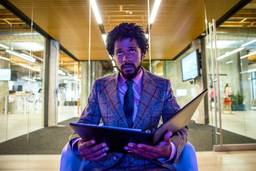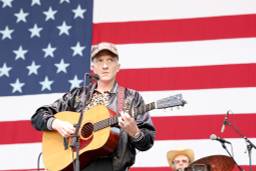Zora Neale Hurston’s Lost Work Couldn’t Come at a Better Time
In Barracoon, published 58 years after her death, the Harlem Renaissance writer interviews the last known survivor of a slave ship.
Lauren Michele Jackson

Americans arguably know more about Jupiter than slavery. To judge by educational curricula, students in the U.S. better understand the outer contours and inner strata of a celestial body located hundreds of millions of miles away than they do the enslavement of black people on this continent just a century ago. Slavery is a history America would rather forget, but cannot be allowed to.
Barracoon, a newly published work of nonfiction by the late Zora Neale Hurston (1891-1960), tells the life story of the last survivor of the Middle Passage, the oceanic route by which an estimated 12 million kidnapped and enslaved African people were transported to the Americas. In 1927, Hurston traveled to Plateau-Magazine Point, Ala., to speak with 86-year-old Oluale Kossula, also called Cudjo Lewis. He was aboard the Clotilda, the last known American slave ship. Kossula, born in Bantè, an Isha town in western Benin, was the grandson of an officer to the king. At age 19, he was taken prisoner and placed in a barracoon, a coastal holding cell used to detain Africans before they were sold and shipped across the ocean. Three weeks later, Bill Foster, a white American slave trader, ripped Kossula and 109 others from their homeland and smuggled them to Alabama.
Famous as a key figure of the Harlem Renaissance and an author of vernacular fiction—particularly the 1937 novel Their Eyes Were Watching God—Hurston was also a historian, ethnographer, folklorist and critic. Today’s researchers could learn a thing or two from her approach. She makes transparent her role as listener and mediator—an ethical maneuver all too uncommon when relating the stories of the oppressed. She knows herself to be a visitor: to Kossula’s home in Plateau, a post-war settlement of Clotilda survivors known as Africatown, and to his story, told across a series of meetings. Hurston begins at the front steps of Kossula’s porch, calling his name. Her first question shocked me; it was so simple and humane. “First,” she says, “I want to ask you how you feel today.”
Readers who expect to experience vicarious torture and gore, as in cinematic interpretations like Django Unchained or 12 Years A Slave, will not find such gratuitousness here. Kossula does not wade into the bloody violence of slavery and white supremacy, nor does Hurston prompt him to. His horrors belong to him alone, buried in the cries to God that punctuate his telling. “His face was twitching in abysmal pain,” Hurston notes on one occasion, and quietly leaves his porch, rather than push on. The next time they meet, the two share only chores.
In Barracoon, the legislative landmarks that loom so large in histories of slavery recede to the fringes. The U.S. outlawed the international purchase of slaves in 1808, yet our story starts in 1859, when four white men sailed from Mobile, Ala., to Benin with the intent to purchase people. Kossula’s story shows how mutable and ineffectual the rule of law can be to a black person in America. Barracoon is as much about circumscribed freedom as enslavement; Kossula lives as a slave for “only” five years, until Robert E. Lee’s surrender on April 9, 1865. But Kossula is later denied justice after a deputy sheriff murders his son. He’s also deprived of $650 awarded by a judge after a collision with a train leaves him severely injured.
Death and overwhelming loneliness follow Kossula from the barracoon through enslavement and into the life he makes in the marooned community of Africatown—so named, he tells Hurston, “ ’cause we want to go back in de Affica soil and we see we cain go. Derefo’ we makee de Affica where dey fetch us,” his voice transcribed in the dialect Hurston lovingly reserved for her folk. In Africatown, Kossula finds a wife and has children—although by the time Hurston arrives, he has only grandchildren and great-grandchildren to cling to, having lost his daughter and four sons (one to an oncoming train, another to illness and two to mysterious disappearances). In one moving moment, Hurston takes Kossula’s picture. “I’m glad you takee my picture. I want to see how I look,” he tells her. Hurston adds that he also “asked to be photographed in the cemetery among the graves of his family.”
In the book’s preface, dated April 17, 1931, Hurston writes that Barracoon is not a “scientific document” and Kossula’s narrative should not be taken in as rote learning material. It is, again, his—a very particular experience even as he shared it with millions of others: the story of Africa, the story of America, and the purgatory between the two, the barracoon. Says Kossula, “We here and we got to stay.”
Lauren Michele Jackson teaches in the departments of English and African American studies at Northwestern University. She is the author of the forthcoming book White Negroes: When Cornrows Were in Vogue … and Other Thoughts on Cultural Appropriation.







